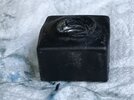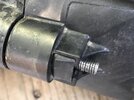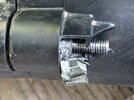Titaniumboy
Active Member
I changed the jet pump oil in the nose cone in 2010. I used the Permatex equivalent of Loctite 518 to seal the nose cone. When I removed the nose cone yesterday I found a bunch of squeezed out red goo that had never hardened.
Any tips on cleaning up that Permatex red goo?
And is the gasket maker supposed to be applied to the nose cone or the pump assembly or both? Should I make sure the o-ring is coated with this stuff or make sure that none of it touches the o-ring?
And I sure won’t be torquing the nose cone bolts to 35 lb-in like the shop manual instructs. Last time I did that in 2010, I managed to slightly crush the nose cone bolt ears with that specified torque.
Any tips on cleaning up that Permatex red goo?
And is the gasket maker supposed to be applied to the nose cone or the pump assembly or both? Should I make sure the o-ring is coated with this stuff or make sure that none of it touches the o-ring?
And I sure won’t be torquing the nose cone bolts to 35 lb-in like the shop manual instructs. Last time I did that in 2010, I managed to slightly crush the nose cone bolt ears with that specified torque.







